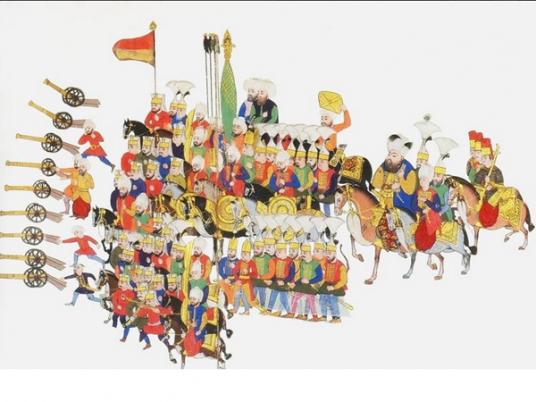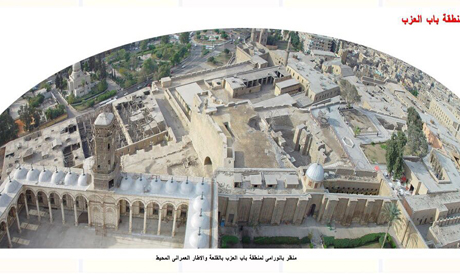
The cover of a new book entitled “The Incident of Sultan Selim and Sultan Al-Ghauri” by Egyptian historical researcher Abdel Aziz Gamal Eddin shows an Ottoman army formation blasting cannons in battle.
“The artillery was a defensive weapon under the Mamluks and until Tuman Bay, but the Ottoman army took it from Egypt and made of it an offensive weapon carried on wheels,” said Gamal Eddin.
“As portrayed in the painting on the cover of his book, behind the artillery you can see the infantry and the cavalry. And behind those, you can see the army leaders and the holders of the honorable flags. In the back, you can see the Sultan and his servants,” he added on his Facebook page.
Gamal Eddin's book delves into the manufacture and use of artillery and gunpower in both the Mamluk and the Ottoman periods.
“Undoubtedly, the Ottomans defeated the Mamluks in the battle of Marj Dabiq because they used gunpowder, while the Mamluks did not due to a fatwa (religious edict) that forbids Muslims to fight each other with guns. The proof is that the Mamluks did use gunpowder for the first time in the battle of Ain Jalut (Spring of Goliath) in 658 AH or 1260 AD.
The basic ingredient of gunpowder is Sodium Nitrite, which is found in huge quantities in Wadi al-Natrun west of the Delta, explains Gamal Eddin. “The Mamluks used it for cannons. They had foundries to produce these war machines that were modern at the time, one of which lied behind the Citadel.”
He sayid others had better use of those machines when they adopted them. “While the Mamluks preferred to use swords and horses in a manifestation of gallantry, they left those machines for the Egyptians and the slaves.”
But it was the Ottomans in particular who were most interested in cannons and gunpowder, making them a basic weapon and assigning special divisions for them in their armies called Topdjalar, says Gamal Eddin. “The battle of Marj Dabiq was indeed a battle of gunpowder, according to my new book.”

